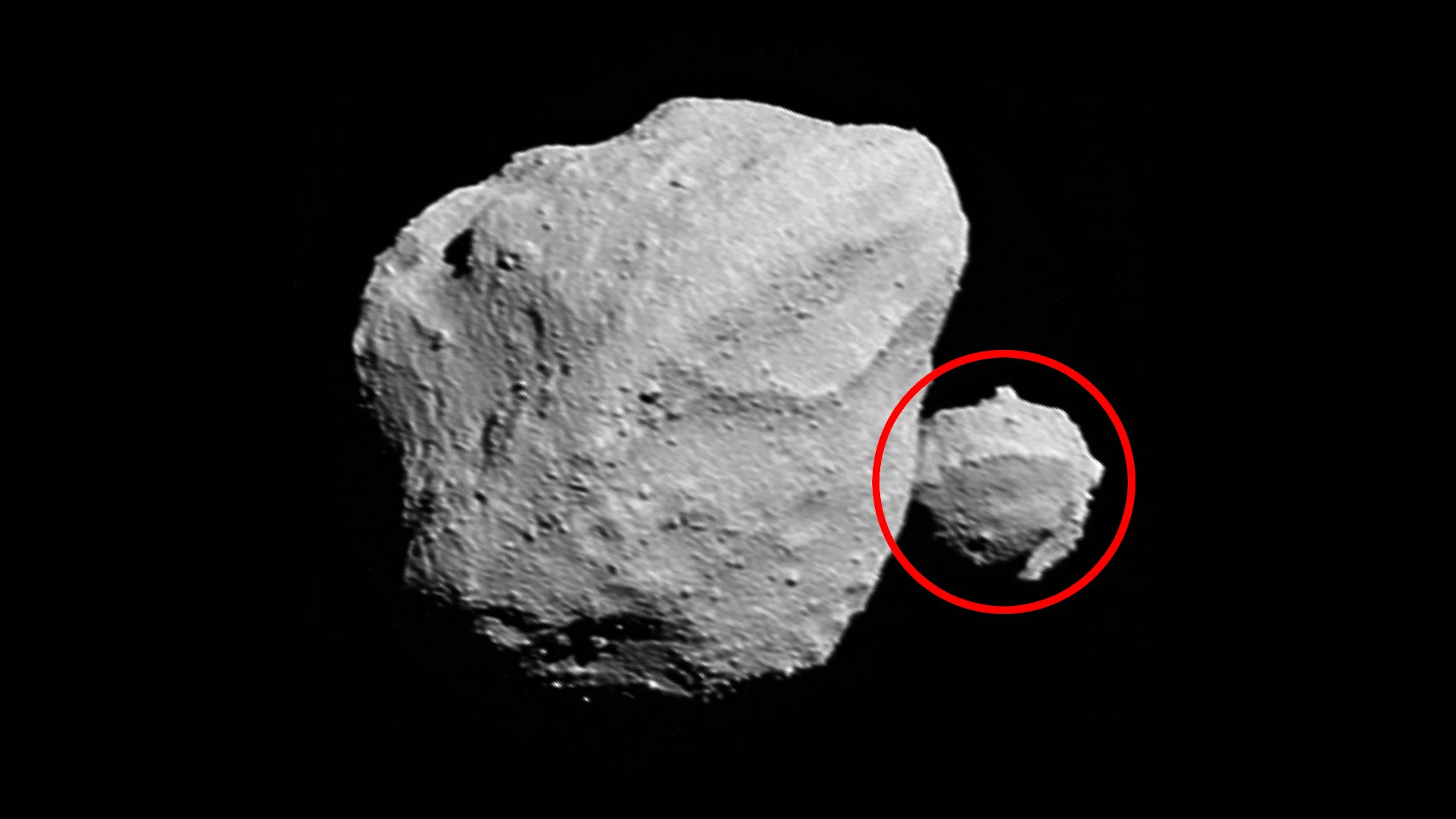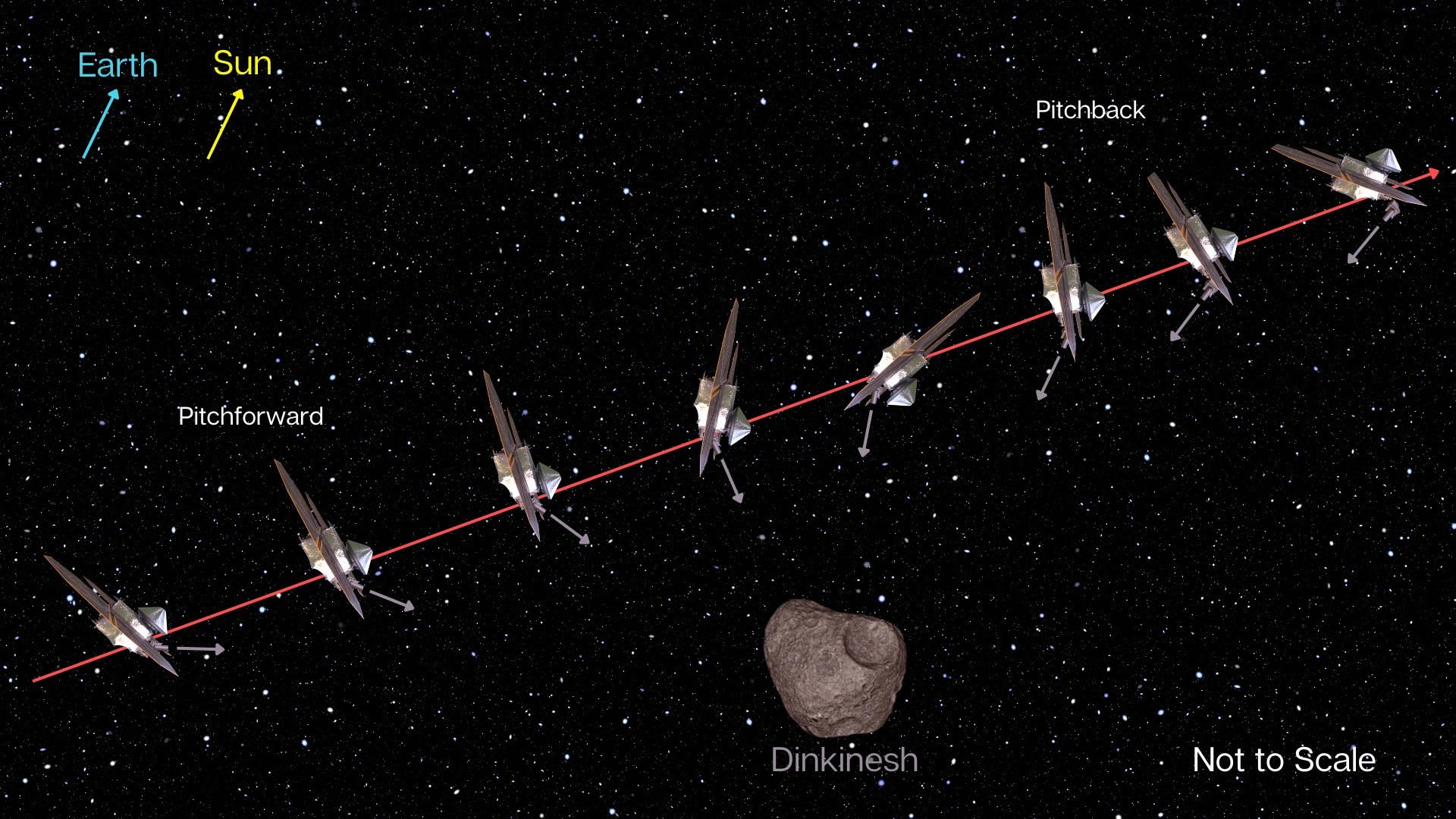
Lucy's first closeup of asteroid Dinkinesh reveals it has a small moon!
"We knew this was going to be the smallest main belt asteroid ever seen up close. The fact that it is two makes it even more exciting," says one NASA scientist.
The Lucy spacecraft just flew past the first of its asteroid targets, but the images returned had a surprise in store for the mission team. The target wasn't just one asteroid, but two!
NASA's Lucy mission is heading towards Jupiter to study several 'trojan' asteroids that share the giant planet's orbit. On the journey, the mission team is taking advantage of every opportunity to visit asteroids that conveniently lie along the spacecraft's chosen path.

Lucy's path of exploration is plotted on this view of the inner solar system. Included are the names of the seven planned asteroid targets that Lucy will visit between now and 2033. Credit: NASA's Scientific Visualization Studio
One such target is located in the inner part of the asteroid belt, at roughly twice the distance that Earth orbits the Sun. First spotted in November 1999, this 750+ metre-wide space rock went through a series of names as it was lost and rediscovered several times since its initial discovery. As of February 2023, the International Astronomical Union has officially designated it as 152830 Dinkinesh.
According to NASA, Dinkinesh means "you are marvellous" in Amharic, the official language of Ethiopia. It is the Ethiopian name for Lucy, the Australopithecus afarensis human ancestor fossil found in that country in 1974. It is also the namesake of this NASA mission due to the targets of the spacecraft being considered 'solar system fossils' by the mission team.
Back in May of this year, the Lucy mission team adjusted the spacecraft's trajectory to line it up for a close pass by this asteroid. This was primarily planned to test Lucy's ability to track its targets. However, this also represented a chance to see a small main-belt asteroid up close for the first time.

Lucy's maneuvers as it performed the flyby of asteroid Dinkinesh are demonstrated here, as it pitched forward to keep the L'LORRI camera on target, and then swung back to realign its solar panels with the Sun. Credit: NASA/Goddard/SwRI
On November 1, 2023, Lucy perfectly executed that flyby, coming within 430 km of Dinkinesh while travelling at over 16,000 kilometres per hour. During the maneuver, the probe rolled over to keep its Lucy's Long Range Reconnaissance Imager (L'LORRI) camera trained on the asteroid, gathering as many images of it as possible.
The observations confirmed its size, first estimated from telescope observations, but also revealed something remarkable.
Dinkinesh isn't alone!

Asteroid 152830 Dinkinesh is pictured here on Nov, 1, 2023, by the L'LORRI camera, along with its newly-discovered companion moon. Credit: NASA/Goddard/SwRI/Johns Hopkins APL/NOIRLab
"We couldn't have hoped for something this spectacular when developing L'LORRI because we had no idea," Neil Dello Russo, the L'LORRI instrument principal investigator, said in a Johns Hopkins Applied Physics Laboratory press release. "But the results are nothing short of remarkable. The instrument worked flawlessly and has already made an unexpected discovery. We're overjoyed."
Based on these new images, we now know that Dinkinesh is a special kind of asteroid known as a close binary.
READ MORE: Surprise! Asteroid Dinkinesh's tiny moon was hiding a secret!
"In the weeks prior to the spacecraft's encounter with Dinkinesh, the Lucy team had wondered if Dinkinesh might be a binary system, given how Lucy's instruments were seeing the asteroid's brightness changing with time," NASA said. "The first images from the encounter removed all doubt."
The primary asteroid is now estimated at roughly 790 metres wide at its widest point. This is only slightly larger than the initial calculations of its overall size made using telescopic observations from Earth. The smaller asteroid, which orbits around the primary, is estimated at around 220 m across.
"Dinkinesh really did live up to its name; this is marvelous," Hal Levison, the principal investigator for the Lucy mission at the Southwest Research Institute, told NASA. "When Lucy was originally selected for flight, we planned to fly by seven asteroids. With the addition of Dinkinesh, two Trojan moons, and now this satellite, we've turned it up to 11."

A series of pictures of the binary asteroid pair, Dinkinesh, as seen by Lucy's terminal tracking camera (T2CAM) during its close approach on Nov. 1, 2023. The five frames arrayed across the image were each taken 13 seconds apart. The apparent motion of the two asteroids is due to the changing perspective of the camera as the spacecraft flew past at 4.5 km/s. Credit: NASA/Goddard/SwRI/ASU
"We knew this was going to be the smallest main belt asteroid ever seen up close," Keith Noll, a Lucy project scientist from NASA's Goddard Space Flight Center, said in the press release. "The fact that it is two makes it even more exciting."
"In some ways these asteroids look similar to the near-Earth asteroid binary Didymos and Dimorphos that DART saw, but there are some really interesting differences that we will be investigating," Noll added.
According to NASA, Lucy will finish transmitting the rest of the data gathered during the encounter with Dinkinesh and its moon in the days ahead. The mission team will then use that data to plan for the spacecraft's 2025 encounter with asteroid 52246 Donaldjohanson (named after the American paleontologist who co-discovered the Lucy fossil).
Before then, the Lucy spacecraft will pass by Earth in December 2024 to pick up some extra speed via gravity assist. It is expected to reach its first target among Jupiter's trojan asteroids, 3548 Eurybates, in August 2027.










